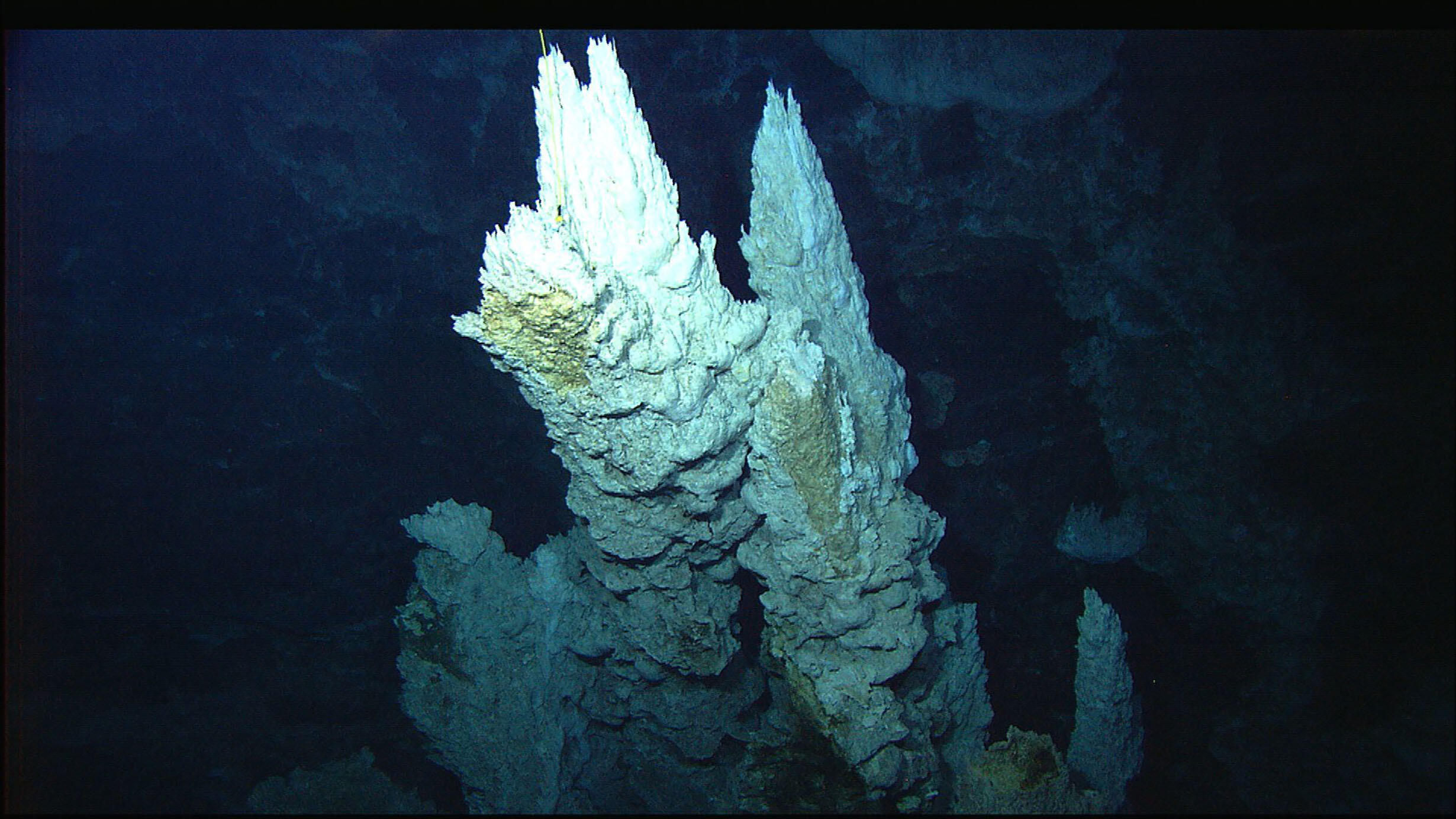 Carbonate spires in the Lost City hydrothermal vent field, in the Atlantic Ocean, Mid-Atlantic Ridge.
Carbonate spires in the Lost City hydrothermal vent field, in the Atlantic Ocean, Mid-Atlantic Ridge. All life on Earth is composed of organic molecules—compounds made of long rings or chains of carbon atoms with other elements attached.
Today, most of these organic molecules come from the reduction of carbon dioxide (CO2) through several carbon-fixation pathways, such as photosynthesis in plants. But most of these pathways either require energy from a living cell in order to work or were thought to have evolved relatively late. So how did the first organic molecules arise before the origin of life?
New research led by the Museum and funded by NASA proposes a possible answer: a carbon-fixation pathway that may have played a key role in producing the first organic molecules on Earth about 4 billion years ago. The process is similar to what might have occurred in some ancient underwater hydrothermal vents on Earth, and may also have relevance to the search for life elsewhere in the universe. The study was published this month in the journal Proceedings of the National Academy of Sciences.
“The consequences extend far beyond our own biosphere,” said Museum Gerstner Scholar Victor Sojo, the lead author on the study. “Similar hydrothermal systems might exist today elsewhere in the solar system, most noticeably in Enceladus and Europa—moons of Saturn and Jupiter, respectively—and so predictably in other water-rocky worlds throughout the universe.”
To demonstrate this process, Sojo and Reuben Hudson from the College of the Atlantic in Maine used microfluidic reactors, tiny self-contained laboratories that allow scientists to study the behavior of fluids—and, in this case, gases as well—on the microscale. Their unique design—conceptualized when the two shared a lab bench at the RIKEN Center for Sustainable Resource Science in Saitama, Japan—combines hydrogen with CO2 to produce an organic molecule called formic acid (HCOOH). This synthetic process resembles the only known CO2-fixation pathway that does not require a supply of energy overall.
“Understanding how carbon dioxide can be reduced under mild geological conditions is important for evaluating the possibility of an origin of life on other worlds, which feeds into understanding how common or rare life may be in the universe,” added Laurie Barge from NASA’s Jet Propulsion Laboratory, an author on the study.
The findings may also have relevance for environmental chemistry, where there is an active search for new methods of CO2 reduction to combat climate change.